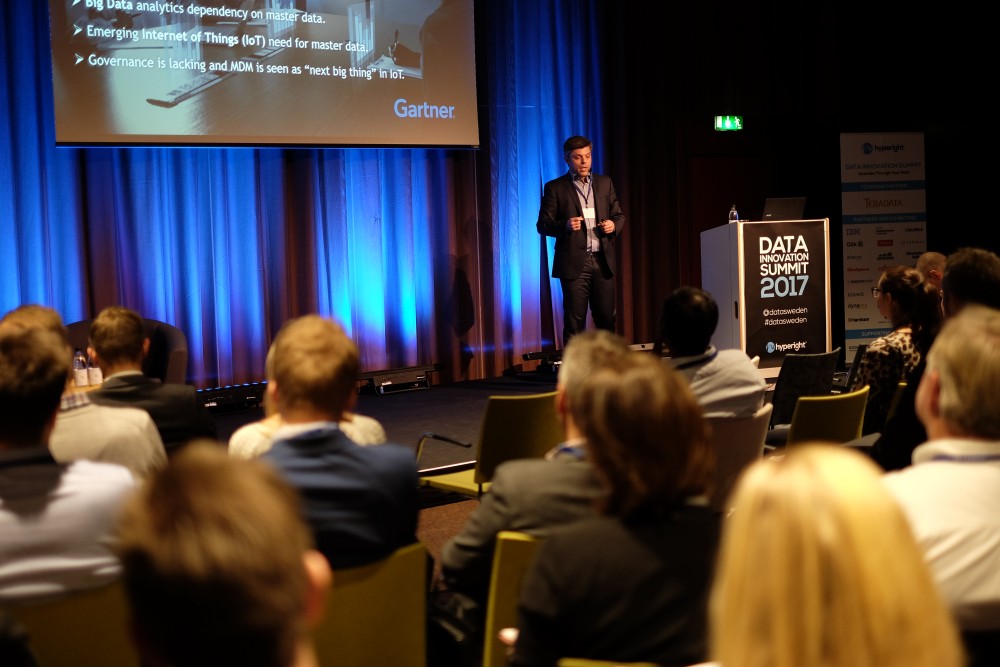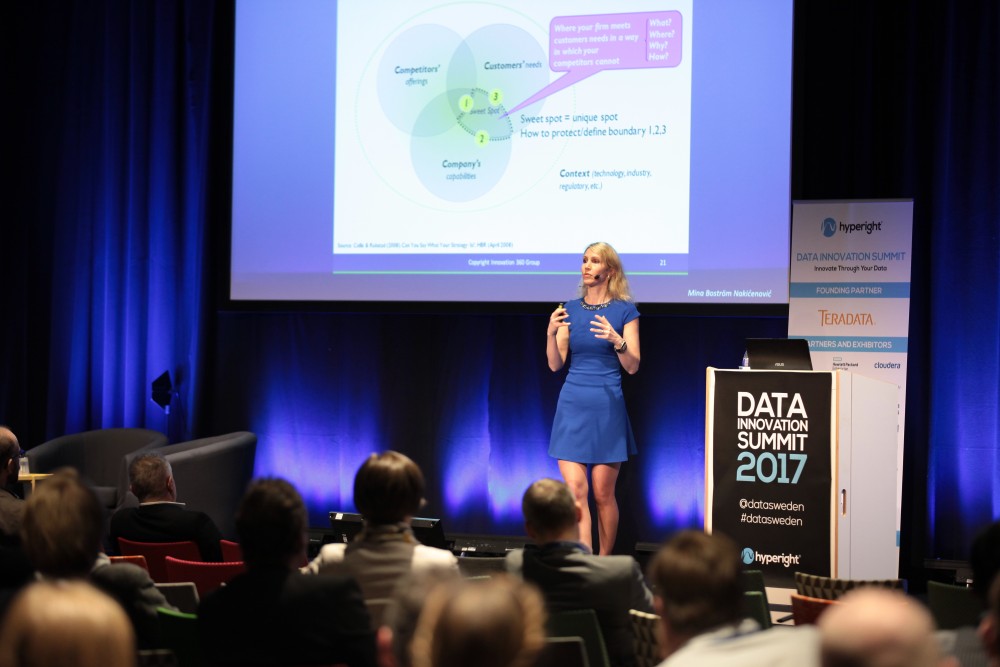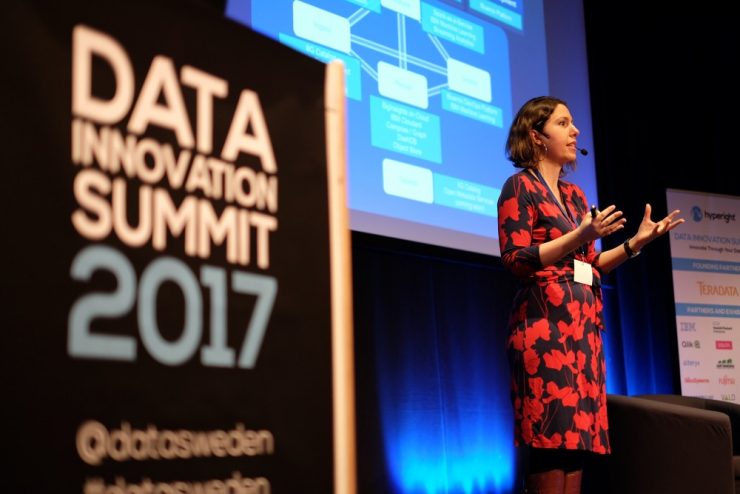From Data to Innovation
Last week, we looked at the very beginnings of the Data Innovation Summit in 2016 and remembered the main topics of discussion through our speakers’ presentations. The first 2016 edition laid out the foundation for data-driven innovation and brought light to the macro drivers, the challenges, the implications and the solutions. Whereas, the 2017 edition showcased more practical case studies on “how” and real examples of putting data innovation into practice.


In this article, we’ll glance at the sessions that revolved around turning data into insights and innovation and give tribute to the speakers who delivered them at the second edition of the Data Innovation Summit.
Mastering The Data Value Chain – Henrik Göthberg
Henrik Göthberg, then working as a Data & Analytics Transformation Lead at Vattenfall, discussed how to master the data value chain within the business in his Chairman’s opening remarks. Prior to Henrik’s presentation, some major things had happened at Vattenfall, starting with buzzing around the term analytics and a few projects on data analytics. Henrik touched upon some quite relevant questions:
- How do you find the business case and the data value within the business
- The need to really know the value chain in different business levels
- What are the fundamental roles and capabilities in order to master the data value chain
- How to turn data streams into company revenue streams.
Data As A Driver For Innovation And Digital Transformation – Håkan Gustafsson
Håkan Gustavsson, Enterprise Architect at ICA Gruppen, talked about the practice at ICA Gruppen of setting up a more structured approach of innovation, putting in place processes and understanding the opportunities of digital transformation. Håkan explained that when they defined their use cases in all areas of the company, they discovered that 85% of use cases were related to data. So it became clear that they can’t talk about innovation without considering the power of data.
From Data-Centric Insight To Innovation – Glen Koskela & Alexander Kaffenberger
Glen Koskela and Alexander Kaffenberger gave a focal point of data innovation in the manufacturing field. Glen gave an overview of the opportunities for using the OT data from sensors in innovation and what a company can accomplish in terms of machine efficiency if it utilises this operational data. But the crucial question was how to communicate that data, highlighted Glen. Alexander, in turn, presented the technology needed to sum up and analyse all the data of various levels of a company and the models behind the machine data innovation.
Digital Leadership: Lifting Your Analytical Capabilities By The Bootstraps – Johan Magnusson
Johan Magnusson came back on stage at the Data Innovation Summit for a second time and touched upon the expansion of data innovation into other departments beyond IT, such as HR, finance, R&D. Other functions caught on data innovation and started to understand the increased necessity of data-related capabilities due to the increased digitalisation. As business and IT were beginning to catch on that data is an asset and that it could be utilised to drive innovation, digital leadership became that more crucial for elevating the analytical capabilities in the organisation. Johan explained the intricate connections between digital leadership and digital capabilities and presented how to establish it.
Analytics in Action – Martin Willcox
Martin Willcox, Vice President Of Technology at Teradata, discussed the common misconceptions among managers and technologists and related that they failed to appreciate that Data Science is more like research and development than it is like software engineering. Martin introduced the three central concepts that underpinned the reasonably new discipline Data Science in 2017 and provided real-world examples of Analytics in action that demonstrate the commercial value of Data Science.
Fashion Forecasting And Insights – Kashif Rasul
Dr. Kashif Rasul, Research Scientist at Zalando, introduced the challenge of fashion sales forecasting for items that have no sales history. He presented a high-level overview of how Zalando uses machine learning models to capture both the nuances of the consumer marketplace as well as customer behaviour. Kashif also gave insight into Zalando’s new ways to make use of novel data and solve engineering problems, in his Data Innovation Summit 2017 presentation.
Leveraging Field Data From The Connected Digital Construction Worker – Henrik Fälldin
Henrik Fälldin told the story of how they moved from analogue to digital on the construction sites at Skanska. He introduced the term connected construction worker, which means providing construction workers with a digital tools box and enabling right information, to the right people, at the right time. And he also talked about how they leveraged the data that construction workers collected at the site, how they processed and visualised it to give insight in order to enable smart decision making at all levels of the company.
Driving School Improvement Through Data – Alejandra Neyra
Alejandra Neyra, Business Intelligence Manager/ Data Analyst at Council of International Schools, shared successful initiatives and case studies that encourage the use of objective and contextually appropriate data to drive student learning and strategic decisions in international schools. Alejandra stated that international schools have a wealth of data at their disposal, but often failed in the analysis as this can be a complex and time-consuming task. Moreover, she outlined concrete examples of data-driven initiatives that any school can engage to support student learning regardless of budget or technological tools.
Combining Online And Offline Data For Improved ROI – Toni Jarimo
Toni Jarimo, Director of Marketing and Web Analytics at Kesko, presented how they at Kesko significantly improved their Return on Marketing Investment by innovatively combining online and offline data. As customers started spending time both at online as well as physical stores, retailers need to ensure that the online services work seamlessly with the experience in brick-and-mortar stores. In order to develop the best customer experience, both online and offline, retailers need to combine data from both perspectives. By understanding the holistic customer data, they could significantly improve their return on services development and marketing investment, emphasises Toni.
Data-Driven Approach To Condition Monitoring To Improve The Service Business – Henrik Pedersen
Henrik Pedersen, Solution Architect Diagnostic Intelligence at Siemens Gamesa Renewable Energy presented their data-driven maintenance initiative, which involved data collected from sensors on their wind turbines and turning it into business value. Henrik explored Siemens Gamesa’s value chain from transforming the measurement directly from the sensors in the wind turbines to getting useful business impact on the other end and sending technicians to fix issues at the wind turbines.
Improving Equities Trading With Data Science – Morten Bunes Gustavsen
Morten Bunes Gustavsen, Head of Data at DNB Wealth Management talked about how DNB Asset Management analyses the large amount of data received during and after each trade, and how this is used to optimise the trading performance. Morten also presented the challenges of noisy financial data and how to handle the noise to see patterns in the data, in his Data Innovation Summit 2017 presentation.
Swimming in the Blue Ocean – Mina Boström Nakicenovic
As the last session from the Innovation stage, Mina Boström Nakicenovic expounded how she turned to blue ocean strategy and found a way to make the competition irrelevant. Blue ocean strategy is a strategic mindset. It challenges the tenets of competitive strategy and calls for a shift in focus from competing to creating new market space and hence making the competition irrelevant. Mina described how to apply SWOT analysis to create your own blue ocean, a profitable uncontested market space, making the competition irrelevant.
…


In the next article, we’ll go over the practical case studies of companies that made significant inroads with data analytics and data science in 2017 and proudly presented them at the Data Innovation Summit. Stay tuned!














Add comment